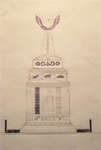"Six Nations Still Waiting for Claim to be Accepted"
- Full Text
- Six Nations still waiting for claim to be accepted
OHSWEKEN - Land in East Hawkesbury and Innisfil townships must be the most valuable in Canada, Phil Monture figures.
The Six Nations of the Grand River paid four times for 4,000 acres in the first municipality, east of Ottawa, and 900 acres in the second, south of Barrie, counts Mr. Monture, who researches and negotiates the band's land claims.
And the Department of Indian Affairs still does not acknowledge the band owns the land.
Correspondence between Six Nations and the federal government about this claim shows the same problems that bands across the country are complaining about.
England discovered in 1803 that William Claus, assistant to Sir William Johnson, the first Superintendent of Indian Affairs, and trustee for Six Nations since 1799, could not account for some of the band's money, according to the band's report on the claim.
Mr. Claus did not co-operate with the investigation and the amount was not determined. So the government gave the band his estate, including the 4,900 acres in what became the two townships, in 1844, 18 years after his death.
But it used the band's money to pay his family for the land.
When white settlers encroached, the government used the band's money to pay them to leave.
When East Hawkesbury Township taxed the land, the government paid the taxes with the band's money. It later advised the municipality that land owned by Indians is not taxable. So it sold the land between 1853 and 1883, without a surrender - the official word for the band's approval - and used the proceeds to compensate the band.
Six Nations filed its claim in East Hawkesbury Township in October, 1984, when David Crombie was Minister of Indian Affairs and Wellington Staats was the band's chief. The claim in Innisfil Township, filed in 182, is being handled with it because both resulted from the same circumstances.
Under a new minister, William McKnight, and a new chief, William Montour, the band is still waiting for the government to accept the claim.
The Office of Native Claims wrote the band in January, 1985, that it was reviewing the claim and it would take three months. When there was no report by August, the band wrote the government and received a response from another official in October saying staff had changed and the claim would be a "priority."
The band learned during a meeting with the government in November that the report had been finished and waiting for a year in the computer where it was written.
The band offered to type the report. "We'll bend over backwards to help them," Mr. Monture said.
A letter from the second official in December said the report would arrive "shortly" and the claim would be addressed by the Justice Department.
The draft report, similar to the one by the band, arrived in December, 1986, and the band learned last May that the Justice Department would study the claim after "other priorities."
It responded the next day with a scathing letter to the government citing the "many and inexcusable delays." The government returned with a letter that the complaint would receive the minister's "personal attention."
The band has not received notice since.
Indian Affairs expects to finish preparing questions about the claim for the Justice Department by the end of this month and it will send a copy of the questions to Six Nations, said J. R. Goudie, director of specific claims.
But Mr. Goudie said he cannot predict when the Justice Department will finish its study. "We used to give a time frame, but we don't do that now. It just creates false expectations and I have to go through the whole range of excuses."
The claim is an example of an "inordinate delay," Mr. Goudie admitted, but he blamed it on "unusual circumstances" like the change in staff and the increasing demand for use of the computer in which the report was written.
"You go into these things with the best interest but if you don't have control, unfortunately, these things happen. We strive to not have this happen. I hope it's not always this slow."
Compared with the band's other claims, this one is insignificant in size and location. But Mr. Monture worries that if the government treats this claim this way, it will treat more important claims in a worse manner.
- Mystery Question
- Who is the author of this article?[Please answer by clicking on the Comments tab]
- Media Type
- Newspaper
- Item Types
- Articles
- Clippings
- Description
- "Land in East Hawkesbury and Innis townships must be the most valuable in Canada, Phil Monture figures."
- Date of Original
- Summer 1987
- Subject(s)
- Personal Name(s)
- Monture, Phil ; Claus, William ; Johnson, William ; Crombie, David ; Staats, Wellington ; McKnight, William, Montour, William ; Goudie, J. R.
- Corporate Name(s)
- Department of Indian Affairs ; Superintendent of Indian Affairs ; Minister of Indian Affairs ; Office of Native Claims ; Justice Department.
- Local identifier
- SNPL002597v00d
- Collection
- Scrapbook #1 by Janet Heaslip
- Language of Item
- English
- Geographic Coverage
-
-
Ontario, Canada
Latitude: 43.06681 Longitude: -80.11635
-
- Creative Commons licence
 [more details]
[more details]- Copyright Statement
- Public domain: Copyright has expired according to Canadian law. No restrictions on use.
- Copyright Date
- 1987
- Contact
- Six Nations Public LibraryEmail:info@snpl.ca
Website:
Agency street/mail address:1679 Chiefswood Rd
PO Box 149
Ohsweken, ON N0A 1M0
519-445-2954



